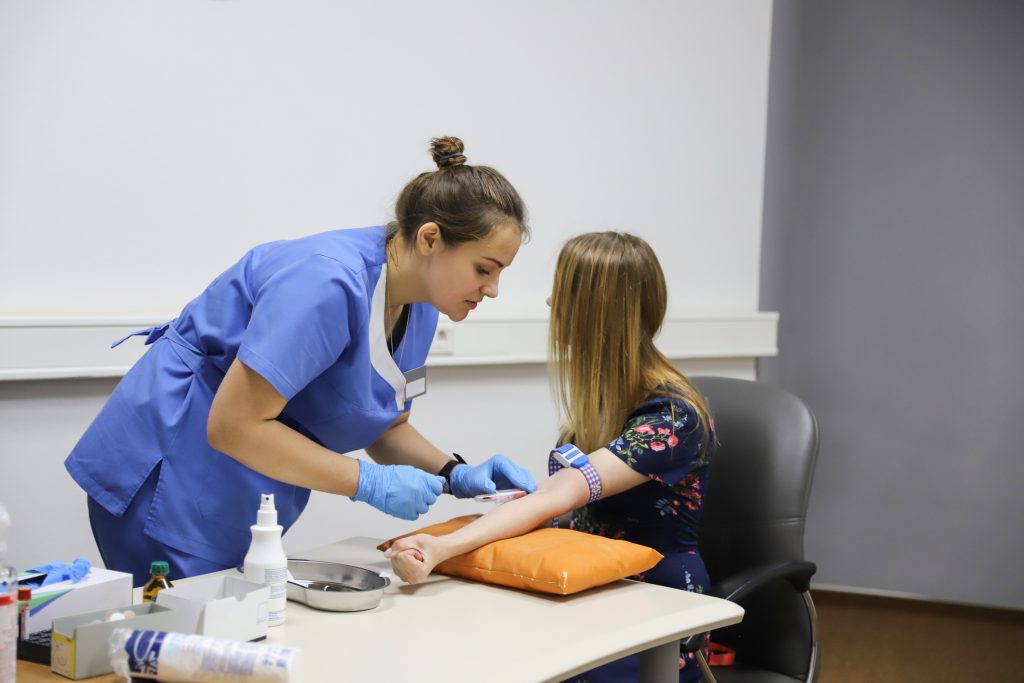Facts About Northeast Medical Institute - New Haven Campus Phlebotomy Course & Cna Class Uncovered
Facts About Northeast Medical Institute - New Haven Campus Phlebotomy Course & Cna Class Uncovered
Blog Article
All About Northeast Medical Institute - New Haven Campus Phlebotomy Course & Cna Class
Table of ContentsNot known Facts About Northeast Medical Institute - New Haven Campus Phlebotomy Course & Cna ClassNortheast Medical Institute - New Haven Campus Phlebotomy Course & Cna Class Fundamentals ExplainedSee This Report about Northeast Medical Institute - New Haven Campus Phlebotomy Course & Cna Class4 Easy Facts About Northeast Medical Institute - New Haven Campus Phlebotomy Course & Cna Class DescribedHow Northeast Medical Institute - New Haven Campus Phlebotomy Course & Cna Class can Save You Time, Stress, and Money.Northeast Medical Institute - New Haven Campus Phlebotomy Course & Cna Class for Dummies
The usage of such devices need to be gone along with by other infection avoidance and control practices, and training in their usage.For settings with low sources, expense is a motoring aspect in purchase of safety-engineered devices. Where safety-engineered gadgets are not readily available, proficient usage of a needle and syringe is appropriate.
One of the necessary pens of quality of care in phlebotomy is the involvement and collaboration of the client; this is mutually helpful to both the wellness employee and the individual. Clear details either composed or spoken need to be readily available per patient who undergoes phlebotomy. Annex F provides example message for explaining the blood-sampling procedure to a person. labelling); transportation problems; analysis of outcomes for scientific administration. In an outpatient department or clinic, provide a dedicated phlebotomy cubicle containing: a tidy surface area with two chairs (one for the phlebotomist and the other for the patient); a hand wash basin with soap, running water and paper towels; alcohol hand rub. In the blood-sampling area for an outpatient division or center, provide a comfy reclining couch with an arm remainder.
Things about Northeast Medical Institute - New Haven Campus Phlebotomy Course & Cna Class
Make sure that the signs for blood sampling are clearly defined, either in a written procedure or in recorded directions (e.g. in a research laboratory type). In all times, follow the methods for infection prevention and control provided in Table 2.2. Infection avoidance and control practices. Accumulate all the equipment required for the treatment and place it within risk-free and very easy reach on a tray or cart, making sure that all the things are clearly visible.
Introduce yourself to the client, and ask the client to specify their full name. Check that the laboratory form matches the person's identification (i.e. match the person's information with the lab form, to ensure accurate recognition).
Make the client comfortable in a supine position (if feasible). Area a clean paper or towel under the patient's arm. Review the examination to be done (see Annex F) and obtain verbal permission. The person has a right to refuse an examination at any kind of time prior to the blood sampling, so it is very important to make sure that the client has recognized the procedure.
How Northeast Medical Institute - New Haven Campus Phlebotomy Course & Cna Class can Save You Time, Stress, and Money.
Prolong the person's arm and examine the antecubital fossa or forearm. Situate a blood vessel of a great size that is noticeable, straight and clear. The layout in Section 2.3, shows common settings of the vessels, however several variants are possible. The median cubital vein lies between muscle mass and is normally one of the most very easy to puncture.
DO NOT put the needle where blood vessels are drawing away, since this enhances the chance of a haematoma. Situating the blood vessel will certainly assist in identifying the appropriate dimension of needle.
Samplings from central lines lug a risk of contamination or wrong laboratory examination outcomes. It is appropriate, but not perfect, to attract blood specimens when very first presenting an in-dwelling venous device, before attaching the cannula to the intravenous fluids.
Unknown Facts About Northeast Medical Institute - New Haven Campus Phlebotomy Course & Cna Class
Permit the area to completely dry. Failing to allow enough call time increases the danger of contamination. DO NOT touch the cleansed site; specifically, DO NOT position a finger over the capillary to direct the shaft of the subjected needle. It the site is touched, repeat the sanitation. Perform venepuncture as adheres to.
Ask the individual to create a fist so the blood vessels are more popular. Enter the capillary swiftly at a 30 level angle or less, and remain to present the needle along the vein at the easiest angle of access - CNA Classes. As soon as enough blood has been collected, release the tourniquet BEFORE taking out the needle
The smart Trick of Northeast Medical Institute - New Haven Campus Phlebotomy Course & Cna Class That Nobody is Talking About
Take out the needle delicately and use mild pressure to the website with a tidy gauze or dry cotton-wool sphere. Ask the client to hold the gauze or cotton wool in position, with the arm extended and increased. Ask the patient NOT to flex the arm, since doing so creates a haematoma.

The 10-Minute Rule for Northeast Medical Institute - New Haven Campus Phlebotomy Course & Cna Class
Where possible, keep the tubes in a rack and relocate the shelf towards you - https://anotepad.com/notes/7i5cjp33. If the sample tube does not have a rubber stopper, infuse exceptionally slowly into the tube as decreasing the pressure and rate made use of to move the specimen lowers the danger of haemolysis.

Report this page